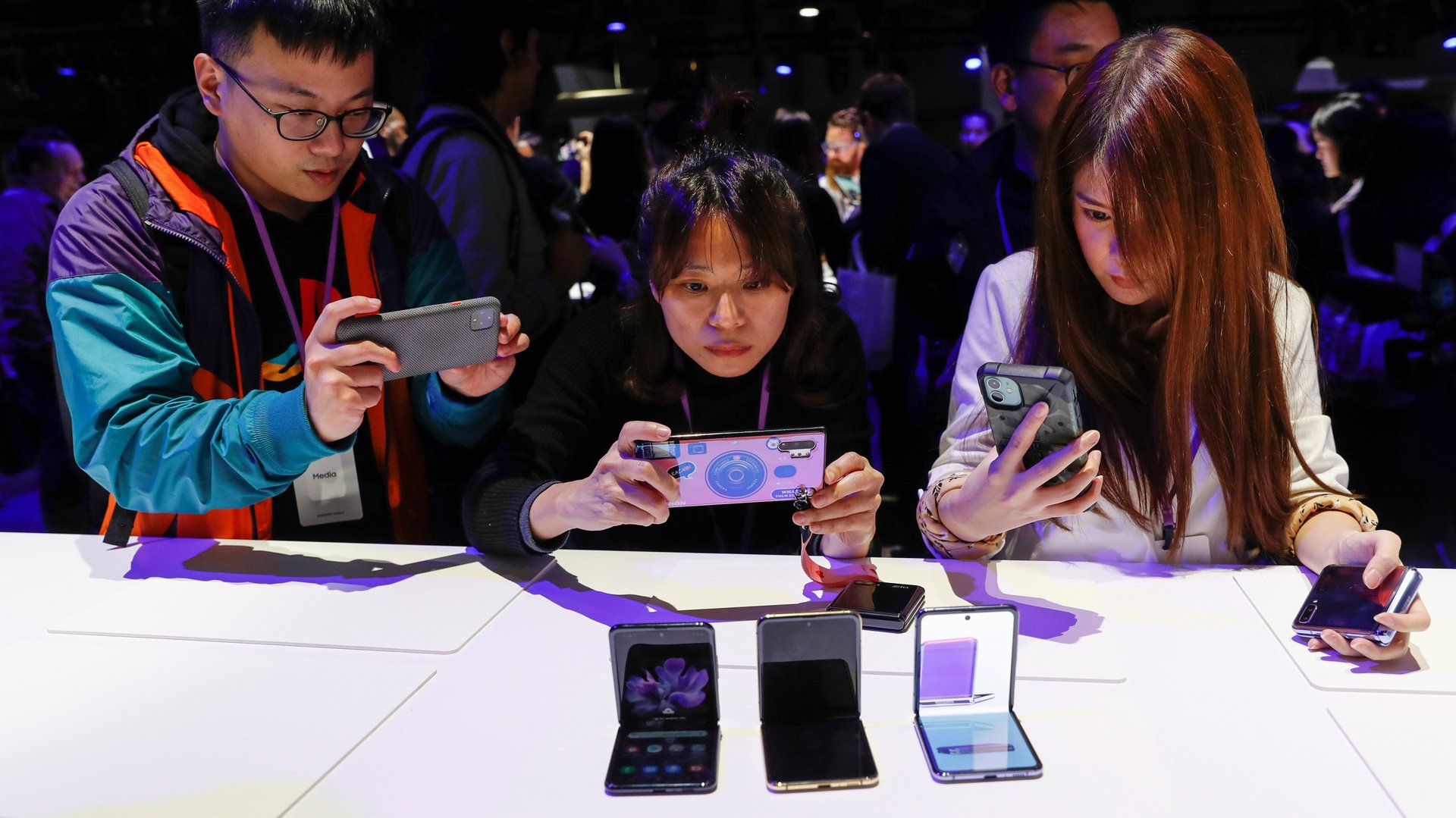Samsung’s Galaxy Z Flip foldable phone reboot is more than a nostalgia play
Samsung just unveiled two very different phones for two very different kinds of users.


Samsung just unveiled two very different phones for two very different kinds of users.
The first, the Samsung Galaxy Z Flip, is the first folding phone that seems fit to withstand the demands of the modern era. The second, the S20, is the latest addition to the company’s flagship line, and is destined to compete with the upcoming iPhone 12, as well as future Android phones from Google, LG, and OnePlus. The company revealed both at its annual Samsung Unpacked event this Tuesday (Feb. 12th), held in San Francisco.
The full S20 line includes three phones in total, the original S20, a larger S20 Plus, and a premium-priced S20 Ultra that is outfitted with the most advanced features. Most people are likely to judge Samsung’s S20 lineup against the iPhone 11. The cheapest S20 model easily outpaces the 2019 iPhone in most categories, with a faster refresh rate for mobile gaming and more advanced camera tech.
But as has always been the case with Apple, its devoted core audience will no doubt just stick to the latest iPhone—the iPhone 12 is due to be released in September. For Android devotees and those on the fence, the Samsung Galaxy S20 will likely be the phone of choice this year.
Meanwhile, Samsung’s Galaxy Z Flip seems to exist in a category by itself. The $1,380 folding phone isn’t just a throwback to the flip phones of the early-aughts. It’s also an attempt at course correction for Samsung.
Ideally, a foldable phone would marry the portability of yesteryear’s flip phones with today’s technology, including a glass screen that has the uncanny ability to bend. But so far, the category has merely slapped a premium price tag on flimsy tech. Motorola’s $1,499 revival of the Razr squeaks when you open or shut it, and its screen has the curious tendency to form lumps. And many were unimpressed by Samsung’s Galaxy Fold, with its $2,000 price tag, plastic screen, and prominent crease.
With the Z Flip, the South Korean electronics giant may have fixed those problems. The Z Flip has an ultra thin glass screen that folds without a sound, and unfolds to reveal a pristine display with a harder-to-detect crease. While it contains an older processor (the Snapdragon 855+), it also has a number of useful features that take advantage of its compact size. Even when your phone is shut, you’ll see text messages and other notifications on its 1.1-inch cover display. When you have it open at a 90-degree angle, you can watch a YouTube video on the top half of the screen and make comments on the bottom half.
“The Galaxy Z Flip is a statement smartphone. It’s for trendsetters and trailblazers,” explained Samsung marketing director Rebecca Hirst at the Samsung Galaxy Unpacked event in San Francisco on Feb. 11.
While the Z Flip certainly does makes some sort of statement, the type of people who blaze trails could easily choose a cheaper phone, a more capable phone, or both. With its premium pricing and its older-than most recent technology (it’s not available in 5G, for example) the Z Flip is likely to appeal to those who desire the novelty of a phone that vaguely resemble something from the Bush administration, but can still hail an Uber, take Google Duo video calls, and includes a fingerprint scanner.
Sure, older millennials may get a kick out of the vintage flip phone design, but at the end of the day, a smartphone in 2020 is a fixture of daily life—and the Z Flip seems more up to the task than other attempts at foldables. Still, for now, the S20 is going to give most buyers the best bang for their buck.